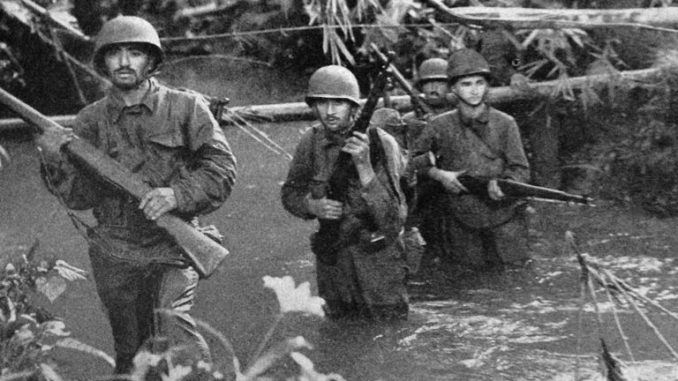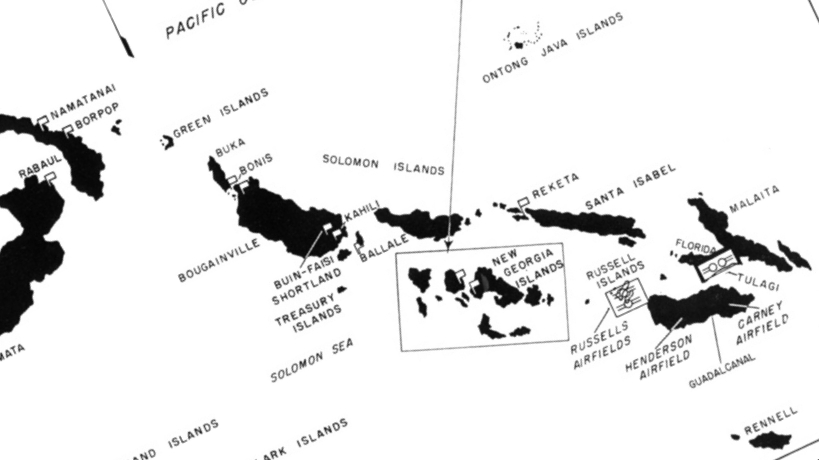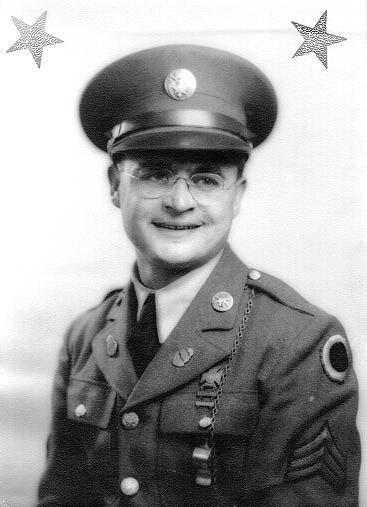
On the morning of 7 August 1942, American and Allied forces landed at Guadalcanal in the southern Solomon Islands, the first major land campaign of the war in the Pacific. The Japanese had taken the island just two months prior, in order to build an airfield from which they could control the surrounding ocean to interdict ships, supplies, and communications.

Previously, in January 1942, the Japanese had taken the port of Rabaul, in what is now Papua New Guinea. From Rabaul, their planes and ships could strike Australia. However, they needed to ensure that America could not interfere. An air base on Guadalcanal would effectively cut off Australia from the United States. The Allies could not allow Japan’s strategy to stand.
It took six months before the Japanese gave up the island and the Battle of Guadalcanal was declared officially over. Still, Japanese air power continued to attack Guadalcanal from bases on the nearby New Georgia Islands, which also served to refuel additional Japanese aircraft attacking Guadalcanal from their Rabaul stronghold. Those islands had to be the Allies’ next objective.
On 30 June 1943, American and Allied troops began landing on New Georgia and smaller nearby islands. As on Guadalcanal the Japanese defense was ferocious, especially around the airfields. After three weeks of heavy fighting and little progress the situation was deemed dire, and a second U.S. Army division was sent to reinforce the U.S. 43rd Infantry. The 37th Infantry Division joined the fight at Munda Point, where the main airfield was, on 23 July.
Sergeant Rodger Wilton Young, twenty-five years old, was a squad leader in Baker Company, 148th Infantry Regiment, 37th Infantry Division. At 5’2″ tall, 125 pounds, he was the smallest man in his outfit. Hardly the image of the iconic hero, he wore glasses due to poor eyesight and his hearing was going.
Rodger was born in Tiffin, Ohio, but spent his childhood first in Green Springs, then Clyde, Ohio. He was an athletic boy who liked sports and hunting. Rodger didn’t impress with his size, but made up for it with enough enthusiasm to convince his high school coach to let him play on the football team, albeit sparingly.
While playing basketball, he was fouled by an opponent and suffered a serious head injury affecting his vision and hearing. It got so bad he couldn’t see well enough to read classroom blackboards and had trouble hearing teachers. Rodger dropped out of high school in his sophomore year.
He wanted to join the Army but figured he couldn’t pass the physical because of his sight and hearing problems. He also figured, correctly, that the National Guard physical wouldn’t be as tough. He joined Ohio’s 37th Infantry Division in 1938, at age twenty.
The 37th ID was activated into service with the regular Army in October, 1940. Rodger, and his oufit, were shipped to Fiji in 1942, and then on to the Solomon Islands for additional combat training in theatre.
Rodger’s eyesight and hearing had continued to worsen. He felt that, as a squad leader, his poor hearing and sight would put members of his squad in additional and unnecessary danger once in combat. He requested a demotion to Private. Thinking that Sergeant Young was trying to avoid going into battle, his company commander ordered medical tests which proved Rodger had been both truthful and genuinely concerned about the men in his squad. His demotion request was granted, but the Army wanted to send him to a hospital for treatment. Rodger made another request: to go with his men into combat.
They went ashore to join the fighting on 23 July. On 31 July 1943, Private Young and about 20 other soldiers were on a reconnaissance patrol when they were surprised by a hidden machine gun nest somewhere on higher ground above them. Two men were killed immediately. Rodger took a bullet in the shoulder. The patrol tried unsuccessfully to flank the machine gun, but two more men were lost. The leader of the patrol ordered a withdrawal.
Rodger shouted out that he could see the enemy position, and ignored the order to withdraw. Under constant fire he made his way uphill 75 yards towards the machine gun, distracting the Japanese with his own rifle fire and allowing his buddies to withdraw safely. He took another bullet to a leg and kept going until he was close enough to throw grenades, killing or wounding all of the enemy soldiers. A final burst from the machine gun killed him.
For his heroic actions, Private Rodger Young was posthumously awarded the Congressional Medal of Honor, and the Purple Heart.
On 31 July 1943, the infantry company of which Pvt. Young was a member, was ordered to make a limited withdrawal from the battle line in order to adjust the battalion’s position for the night. At this time, Pvt. Young’s platoon was engaged with the enemy in a dense jungle where observation was very limited. The platoon suddenly was pinned down by intense fire from a Japanese machinegun concealed on higher ground only 75 yards away. The initial burst wounded Pvt. Young. As the platoon started to obey the order to withdraw, Pvt. Young called out that he could see the enemy emplacement, whereupon he started creeping toward it. Another burst from the machinegun wounded him the second time. Despite the wounds, he continued his heroic advance, attracting enemy fire and answering with rifle fire. When he was close enough to his objective, he began throwing handgrenades, and while doing so was hit again and killed. Pvt. Young’s bold action in closing with this Japanese pillbox and thus diverting its fire, permitted his platoon to disengage itself, without loss, and was responsible for several enemy casualties.
Citation, Congressional Medal of Honor
His remains were returned home in 1949, where he rests at McPherson Cemetery in Clyde, Ohio.

Question of the night: Do you have any plans this weekend?
